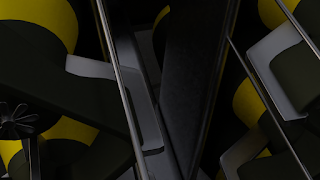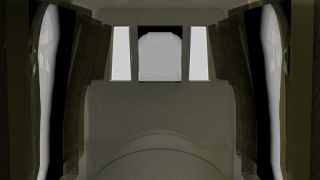New updates for: F4U, concluding the FW 190A-8 and B-17G and Churchill (new project) - October 13, 2024
Hello everyone. It's me Antony, back with another Blog in 2024. We are now on October 13 - past the half of 2024.
I know. I've been absent without writing anything new here. Job, studies, playing video-games, watching some YouTube videos, listening to some musics and doing my chores at some moments decreased my spare-time dedicated to Blogs.
I'm now working on the new role as health community agent and now, my colleagues and I are visiting the families as part of our job to improve the health quality in our community and town. Things are looking good and we're enjoying in our new role.
The 8th semester is finished. Another thing I won't be bothered with. After the second university, I'll give a break for good.
And, again, new Nightwave chapter has been released, with new cosmetics, new mods, new Warframe slot, new weapons slots, rewards from the previous chapters and more. Damn. This never ends and I'm waiting for 1999 to be released (only in winter I guess). Man, I feel exhausted, but let's go.
For this Blog, I'm going to share you the new rendered images of the Vought F4U-1A Corsair, the Focke-Wulf FW 190 A-8 and the Boeing B-17G Flying Fortress.
Vought F4U-1A Corsair:
After the last Blog (FAB, New models in Sketchfab and new updates for: Yak-1 and F4U - October 5th, 2024), I made the UV mapping for the wings and rigging the aircraft. In order to make the ailerons and the outer flap following the wing tip during folding, I changed the Bone Relation from the Aircraft to the Wing Tip and the roundels had to be attached to that bone (changing from the usual procedure, although the A6M Zero remained with the original one).
The Bone for the hook is attached to the landing gear tail link, just like the main tail carriage. The doors and the fairings had to be made based on the Heinkel He 111 in order to rotate the bones in double Z-axis (or simply by Local Rotation instead of Global Rotation in Z-axis).
The F4U looks good, but I need to make some corrections in the landing gear Lift Off / Landing animations. Also, I need to add the textures for the Bump, Specular and Metal; and the effects on the main texture.
Focke-Wulf FW 190 A-8:
The FW 190 A-8 received more adjustments on the Bump, Metal and Specular textures in order to conclude it. Minor adjustments were made on the wings, but, apart from that it looks good. The animation for the landing gear Lift Off / Landing had to be adjusted.
After the last corrections on the main texture, this German air fighter is now ready. You can visualize it in my Sketchfab (even uploaded before being complete):
Boeing B-17G Flying Fortress:
Alright. The B-17G Flying Fortress in its current stage. I concluded the textures for the Bump, Metal and Specular - from the main structure to the decals. In addition, I imported the Armature from the Heinkel He 111 and made some adjustments to fit it in the 4-engine bomber.
The animations were made for the landing gear, flaps, door, bomb bay doors and propellers. The turrets counts with two Bones: one for the MGs and one for the turret itself. The Sperry ball turret follows the same procedure, with the main Bone attached to its shaft for Z-axis rotation while the X-axis is turret itself.
 |
| The B-17 showing its internal sections and components. I reduced the Alpha to 0.001 on the right side of the bomber. |
 |
| The B-17 showing its internal sections and components. I reduced the Alpha to 0.001 on the right side of the bomber. |
 |
| The B-17 showing its internal sections and components. I reduced the Alpha to 0.001 on the right side of the bomber. |
 |
| The forward section of the B-17. The Section 41 (bombardier), Section 42 (command bridge) and the dorsal turret. |
 |
| The middle section of the B-17. The Section 43 (bomb bay). |
 |
| The middle section of the B-17. The Section 44 (radio station) and the Sperry ball turret. |
 |
| The middle section of the B-17. The Section 46, housing two .50 caliber Browning M2 machine guns - placed in different positions to prevent the gunners from colliding with each other. |
 |
| The rear section of the B-17. The Section 49 (aka the 'stinger'), housing two .50 caliber Browning M2 machine guns and the retractable tail-wheel. |
 |
| Section 41. I didn't include the Norden M bombsight and the radio equipment. |
 |
| Section 42. I had to reduce the Alpha for better lighting and add a Solidify modifier for the windows. |
 |
| The narrow corridor to the other sections. |
 |
| The dorsal turret. |
 |
| Section 43. I added the bombs for the B-17's bomb bay. |
 |
| Guys, don't mind the overlaying bombs on the pylon / corridor. |
 |
| Section 44 and the entrance to Section 46. |
 |
| The seats for the radio operator / gunners. |
 |
| The seats for the radio operator. I didn't include a table and the radio equipment. |
 |
| The .50 caliber Browning M2 machine gun - placed to protect the back of the B-17. |
 |
| Section 46. From there, you can see the other Browning MGs and the oxygen tank for the ball turret gunner. |
 |
| The Sperry ball turret - seen from top and with the ammunition boxes. |
 |
| The Sperry ball turret - seen from inside. |
 |
| The waist Browning MGs. Don't mind if I didn't include the ammo belt and the storage boxes. Also, the floor is flat and straight instead of a short flat floor above the main structure. |
 |
| Section 49. |
The B-17 is now ready and available in my Sketchfab (even uploaded before being complete):
https://sketchfab.com/3d-models/b-17g-flying-fortress-texas-raiders-0a0cf784b8a84e969ec64567736ce48e
Before concluding this Blog, one more thing: I started a new project. I said I won't start another one while I have lots of them to finish. Again, my habit of starting new projects projects spoke louder.
The new project I started is the British Churchill infantry tank. As always, I like to share the story of planes, vehicles, ships, weapons and more.
The Infantry Tank Mk IV, also known by its General Staff number A22 or simply by Churchill, is a British infantry tank developed during WW2. The name was chosen after John Churchill, 1st Duke of Marlborough, although there are some discussions from modern historians of Winston Churchill's involvement in the tank's development and the practice of naming cruiser tanks with names that began in C, like Crusader, Covenanter, Cromwell, Centaur, Comet and Cavalier; while the infantry tanks had no particular pattern. The Churchill tank was based on the A20, a heavy infantry tank designed by Harland & Wolff that could replace the Matilda II and Valentine tanks as an armored support tank based on World War 1's trench warfare tactics. However, as battlefield tactics changed after the German victory over Poland, Belgium and France thanks to the Blitzkrieg tactics, the trench warfare became obsolete, causing the British companies to design new tanks to confront the German Panzers. The A22, designed by Vauxhall Motors after a series of prototypes from the A20, had to be rushed out in response to an imminent German invasion of Great Britain in 1941. The first models had eleven bogie wheels to sustain its weight, armor plating consisted in flat steel plates fixed by bolts and two main guns: the 40 mm Ordnance QF 2-pounder located in the turret and the 76 mm Ordnance QF 3-pounder located in the hull. Defensive armament consisted in a Besa MG located in the turret. Later models would change the weapon configuration like the extra Besa MG to replace the second Ordnance gun and the main gun was the 57 mm Ordnance Quick-Firing 6-pounder 7 cwt. Another change was the replacement of the turret by a welded one and the addition of a skirt armor to protect the tracks. The first action seen by Churchill was during the Dieppe Raid in France, 1942. Nearly 60 Churchill tanks were used by the Canadian troops to free the city of Dieppe. However, due to the inexperienced Canadian and strong German defense, a considerable number of tanks were lost. The major action was during the Second Battle of El Alamein in North Africa. The main force consisted of two Mark II and six Mark III. Legends say there was one Churchill tank hit after receiving up to 80 times by German and Italian anti-tank guns. Only one Churchill was lost and partially caught fire. But the major combat between tanks was in 1942 where a platoon of Churchill tanks faced the Tiger 131 at "Point 174" (Gueriat el Atach). One of the 6-pounder guns hit the tank's turret ring after ricocheting in the 88 mm gun, jamming the turret later. After North Africa, Churchill saw action in Europe, mostly in Italy, the Netherlands and Germany. Although it would be sent in Burma and India to confront the Japanese, the War in the Pacific was over, leaving the British tank in the reserve. It would see action in the Eastern Front as part of British war-material sent to the Soviet Union through the Lend-Lease. Despite being disliked by the crewmen, the British tank engaged German tanks during the Battle of Kursk until being replaced by heavy Soviet tanks like the IS-2 and IS-3. With WW2's end in 1945, Churchill saw action in the Korean War against Soviet, Chinese and North Korean soldiers. Production ended in 1945 with around 5,640 units built, including variants like the Churchill Crocodile (flame-thrower tank), Assault Vehicle Royal Engineers or AVRE for protecting British Royal Engineers, ARV, Armored Ramp Carrier, Bridgelayers, Gun Mortar Carrier and Kangaroo (Canadian variant of a turretless Churchill for Armored Personnel Carrier roles).
Here are the images of the Churchill tank. The model selected is the Mark VII.
The chassis, the turret, the top plate and the main wheels were the first components made from scratch, with the main gun and the Besa MG being imported from the Crusader tank. So far, so good. After these renders, I added the smaller wheels and an antenna. I'll share it later, in a future Blog.
I know I have several other projects to conclude, but, my desire to start new projects always speak out loud. I have plans to start the Panzer Panther, but I'll leave the German tanks later. My next candidates are the M26 Pershing and the KV-2.
Well, that's it for now my friends. I hope you like this Blog. Let us hope this year bring us new content and something different from the usual. In case I have some spare time to enjoy, I'll be working on other things aside from Blender projects and my personal things. Until the time comes, you will be surprised to see them. See you next time.
My DeviantArt:
My second Youtube channel:
My other Blogspot places:
My Facebook page:
My Instagram:
My ArtStation:
My Pixiv:
My Sketchfab:
Note: Don't you dare to download these images and re-share it without my permission. If you do, please, leave the original author name.
















































Comments
Post a Comment